Contact UsCONTACT
Please feel free to contact us if you have any questions or concerns.
Inquiry FormStories
STORIES
SERIES EMBARK
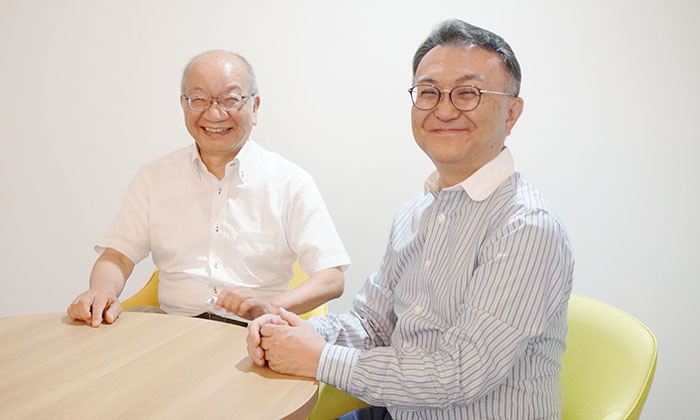
"Analgesics" are painkillers. Typical analgesics currently used mainly for oral administration can be divided into three main groups according to their mechanism of action. These are "acetaminophen," as typified by Koronal, "non-steroidal anti-inflammatory drugs (NSAIDs)," such as Loxonin, and "opioids," such as morphine. Of these, opioids are particularly effective for pain relief and are used to treat postoperative and cancer pain. However, they are not drugs that can be used casually due to problems such as high dependence and behavioral changes. The BTB Therapeutics Co.,Ltd. is developing a completely new "fourth mechanism of action" analgesic that has the same analgesic effect as opioids and is not dependent on them. Clinical trials are underway with the aim of gaining approval as an analgesic for postoperative pain. We interviewed Takashi Kiyoizumi, CEO of BTB, and Tsuyoshi Ogiku, Director of Research and Development, about the current status and prospects of the drug development and episodes unique to a drug discovery venture.
(Interviewer: Sae Ito)
We founded the company in June 2020 to develop an analgesic drug, ENDOPIN, using a compound with analgesic properties, which is the result of research conducted by Dr. Masatoshi Hagiwara, a specially appointed professor in the Department of Drug Discovery Medicine, Graduate School of Medicine, Kyoto University, we are currently developing RECTAS, a therapeutic drug for cancer immunology and rare intractable diseases, using a small molecule compound that targets RNA, another of Dr. Hagiwara's research results.
I originally worked as a plastic surgeon for nearly 10 years and later earned an MBA from the Massachusetts Institute of Technology. After that, I was involved in business development at two venture companies in the U.S. After that, I launched a drug development venture company called MediciNova as a spin-out from Mitsubishi Tanabe Pharma Corporation, which went public, and for the past 18 years, I have been working as an angel investor in San Diego. During my activities as an investor, I met Dr. Hagiwara and became involved with BTB Drug Discovery Research Center in the form of an advisor about 3 years ago, and was appointed as a director in October 2023 and recently as a representative director.
My interest in our business is related to a social problem in the United States, where I currently live. In fact, in the United States, more than 80,000 people die annually from overdose due to dependence on opioids, which are narcotic painkillers. This situation is known as the "opioid crisis," and it is a situation where reducing the use of opioids is a national policy. Therefore, there is an urgent need in the U.S. to develop painkillers that are not addictive and are highly effective. Taking these circumstances into consideration, the BTB Drug Discovery Research Center has decided to develop an analgesic drug in the U.S. and aim to file for approval. I decided to participate in this project because of my experience in drug development and my residence in the U.S. I was eager to help.
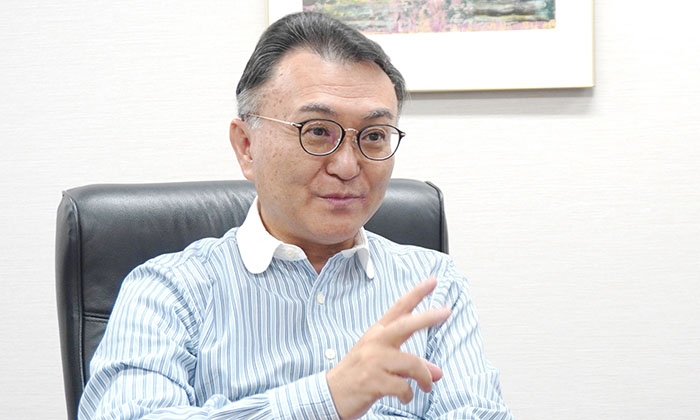
For the past 18 years, I have been supporting venture companies as an angel investor. In doing so, I have come to realize that the stages involved in a university-launched bio-venture are similar to those involved in "building a house. To build a house, an architect must first draw a plan. At pitch events in Japan today, I feel that the main focus is on how to properly draw the plans, such as how to raise funds and how to formulate a development policy. However, just because the drawings are done does not mean the house will be built. It is essential to build the foundation, frame, and other processes. Fortunately for our company, the foundation work had been progressed by the first president, Mr. Ogiku, and others.
The next person needed is a "carpenter". I have seen many different ventures over the past 18 years, so I can usually tell at a glance whether a house will be built properly just by looking at the blueprints. I believe that I am now called upon to find out how we can build houses faster and more efficiently while proceeding with the foundation work. Our ultimate goal of "building a house" is to deliver safe and effective new drugs to patients. I am going to challenge myself to find the fastest way to achieve this goal, with the cooperation of our investors.
There are plenty of challenging situations. I am not saying that I am a "one size fits all" kind of person, because of course not everything went smoothly in the venture companies I have worked for in the past. There are many things that you don't know until you try them. In my previous job, there were times when unpredictable problems occurred, such as when a drug under development had unexpectedly strong side effects, or manufacturing could not be completed in time. But I always feel a sense of satisfaction. I don't know if I can say that I've had enough experience, but my experience has made me less surprised and panicky. I am always struggling to get by.
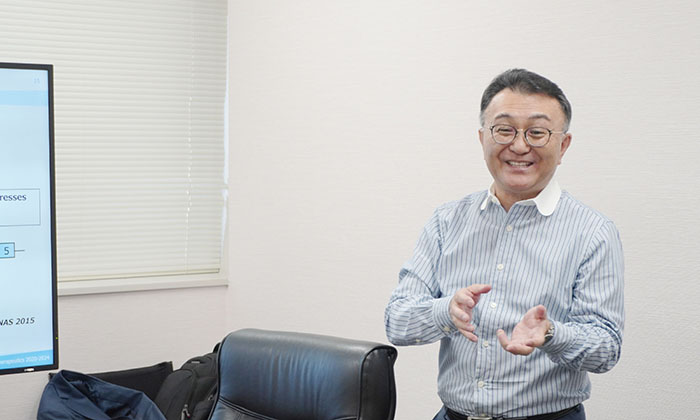
ENDOPIN has a completely different mechanism of action than other analgesics currently in use. When a person feels pain, the brain's normal system releases a substance called noradrenaline in the nerve cells to suppress the pain. This is what is often referred to as the "fire and brimstone" effect, and is made possible by the fact that noradrenaline is secreted into the spinal cord and suppresses pain to some extent.
ENDOPIN produces analgesia through this noradrenaline secretion. Specifically, when ENDOPIN is administered orally, it blocks the α2B adrenergic receptor in the dorsal horn of the spinal cord, resulting in sustained noradrenaline secretion. The analgesic effect is then produced by the binding of noradrenaline to α2A, which is also an adrenergic receptor. Normally, noradrenaline secretion gradually weakens, but by inhibiting the α2B receptor with ENDOPIN, noradrenaline secretion can be sustained and the analgesic effect can be prolonged. Non-clinical studies in mice and monkeys have already confirmed that ENDOPIN has analgesic effects comparable to those of opioids.
Non-clinical studies have shown no dependence, behavioral changes, or even cardiovascular side effects, which have been challenges with opioids. We have already confirmed the drug's safety in healthy adult males in a Phase I (Phase 1) clinical trial, and are in the process of conducting a Phase II (Phase 2) trial for postoperative pain in lung cancer patients who have undergone thoracoscopic surgery. We are first conducting a single-dose clinical trial, but in the future we plan to conduct a repeat-dose safety study and an efficacy study in the United States. First, we are aiming for approval as an analgesic for postoperative pain in the U.S., followed by approval in Japan and an indication for inflammatory pain.
The U.S. Food and Drug Administration (FDA) has published guidelines, stating that if efficacy and safety are proven after at least two of the following surgeries: wisdom tooth extraction, abdominal hernia repair, bunionectomy, and abdominoplasty (liposuction), the drug will be approved for use in all postoperative pain. We will continue to conduct clinical trials for this guideline in the future. We plan to conduct future clinical trials in accordance with this guideline to verify safety and efficacy.
To my surprise, when I had my wisdom teeth extracted in the U.S., I was prescribed narcotic painkillers with opioid ingredients. In Japan, Loxonin is usually prescribed for pain relief after tooth extraction. I do not know if this is because Americans and Japanese perceive pain differently or if it is due to the Japanese "endure culture," but this seems to be the usual prescription in the United States. Some people may become dependent on these drugs because they feel better after taking them. Furthermore, there is the reality that opioid painkillers are being sold in the dark as street drugs. As a result, as mentioned above, many people die from respiratory arrest due to overdose (drug overdose). If ENDOPIN, which is not addictive and has a high analgesic effect, could replace opioids, this situation could be curbed.
In terms of pain relief, opioids are far more powerful than Loxonin. In Japan, opioids are prescribed and used only in cases of strong pain in the final stages of cancer. Compared to the United States, opioids are seldom available, so we are not in a situation like the opioid crisis. However, the fact that ENDOPIN is one of the new options is beneficial in Japan as well. Pain previously tolerated with Kalonar or Loxonin may now be controlled with ENDOPIN, which is safe and highly effective for pain relief.
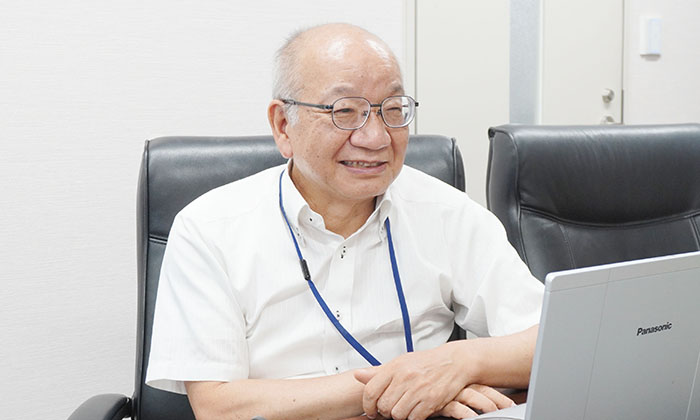
RECTAS is a small molecule compound that works on RNA and is being developed as an orally administered drug to help treat hereditary rare diseases and cancer. Based on the results of Dr. Hagiwara's research, we are developing two types of compounds, RECTAS2.0 for rare diseases and RECTAS3.0 for cancer.
RECTAS2.0 is expected to be useful in the treatment of inherited rare diseases such as cardiac Fabry disease by controlling (repairing) RNA abnormalities. In addition to cardiac Fabry disease, we believe that RECTAS2.0 can be used for the treatment of familial dysautonomia and QT prolongation syndrome, which are also inherited rare diseases.
RECTAS3.0 is expected to enhance the effects of immune checkpoint inhibitors by enhancing proteins specific to cancer cells. By making abnormalities more prominent, immune cells are more likely to recognize and attack cancer cells.
We are currently conducting pre-clinical studies in animals for both RECTAS 2.0 and RECTAS 3.0, with the goal of starting clinical trials in about 18 months. We would like to promote the development of RECTAS2.0 in Taiwan.
There are two major ones. One is the issue of funding. When I was in the pharmaceutical industry, we were able to spend as much money as we could to develop products as fast as possible, but in a venture company, we have to be creative to obtain as much information as possible with minimal funding. The second is that venture companies do not always have the infrastructure in place. While pharmaceutical companies can conduct animal testing and other experiments within the company, venture companies have to outsource each and every step of the process. We try to make our business as compact and efficient as possible by borrowing the wisdom of outside experts and advisors.
Our company is fortunate to have people like Mr. Ogiku who have experience in the pharmaceutical industry. When outsourcing a pharmaceutical manufacturing process, we do not have to go through the hassle of looking for an outsourcing company from scratch, but can ask a company with which Mr. Ogiku has a relationship from his previous job. Because of the relationship of trust that has been built up over the years, it is also appreciated that the outsourcing company can be flexible and say, "Because it's Mr. Ogiku's place...."
What I find about being in a venture business is that it is extremely rewarding. If only I had the strength, I would love to do the same thing two or three more times. In a drug discovery venture like ours, we have the dream of delivering new drugs to patients. Even if we fail, I am convinced that it will be something that we can take from it and use to our advantage somewhere else. I would like to encourage young people to take on this challenge.
A large company is like a baseball team. The position of the pitcher, catcher, etc., is fixed, and you are expected to fulfill your role properly. On the other hand, a venture company is like a basketball team. Although the positions are fixed to a certain extent, when you receive the ball near the goal, you have to shoot it. There is no time for passing the ball around. If you enjoy that feeling, I would like you to come to a venture company. Just as I did in the past, I would like young people to experience the backs of the management team and predecessors at a venture company from a close distance.
(Interviewed in August 2024. Affiliations, positions, etc. are as of the time of the interview)
Painkillers" have helped many people by relieving pain as if by magic when taken. On the other hand, however, opioid painkillers, with their extremely strong analgesic effects, carry the risk of overuse and addiction, and have caused a serious social problem in the United States, known as the opioid crisis, which has resulted in tens of thousands of deaths.
The BTB Therapeutics Co.,Ltd. is taking on this social problem with ENDOPIN, a new analgesic mechanism based on the research findings of Professor Masatoshi Hagiwara and his colleagues at Kyoto University. After its establishment in Japan, a new president will take office this summer and steer the company toward full-fledged U.S. expansion, embarking on a Darwinian sea of drug discovery. We hope that the activities of the BTB Therapeutics Co.,Ltd. and Kyoto University will bring great hope to patients suffering from pain.
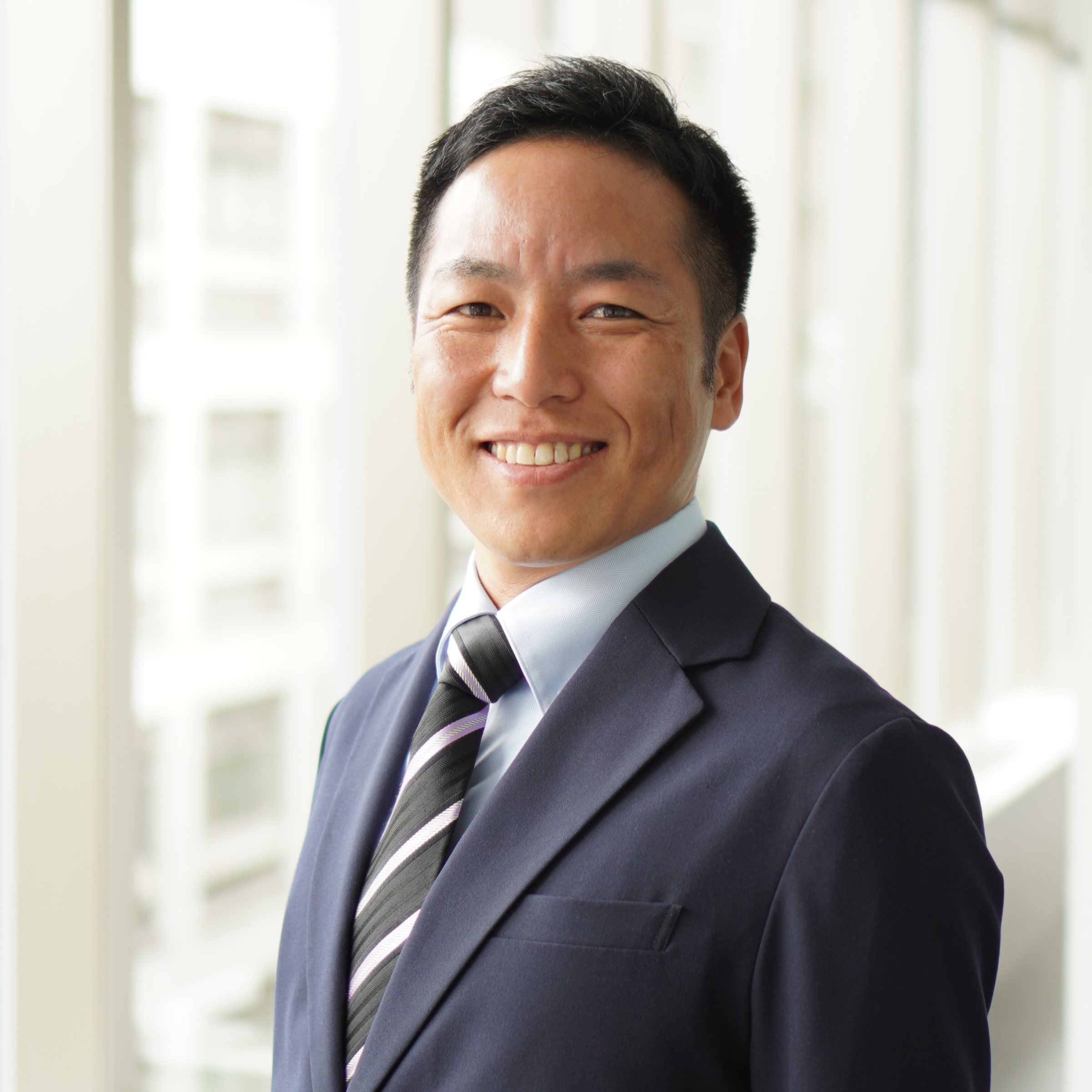
Koji Yokoo

BTB Therapeutics Co.,Ltd.
Please feel free to contact us if you have any questions or concerns.
Inquiry Form